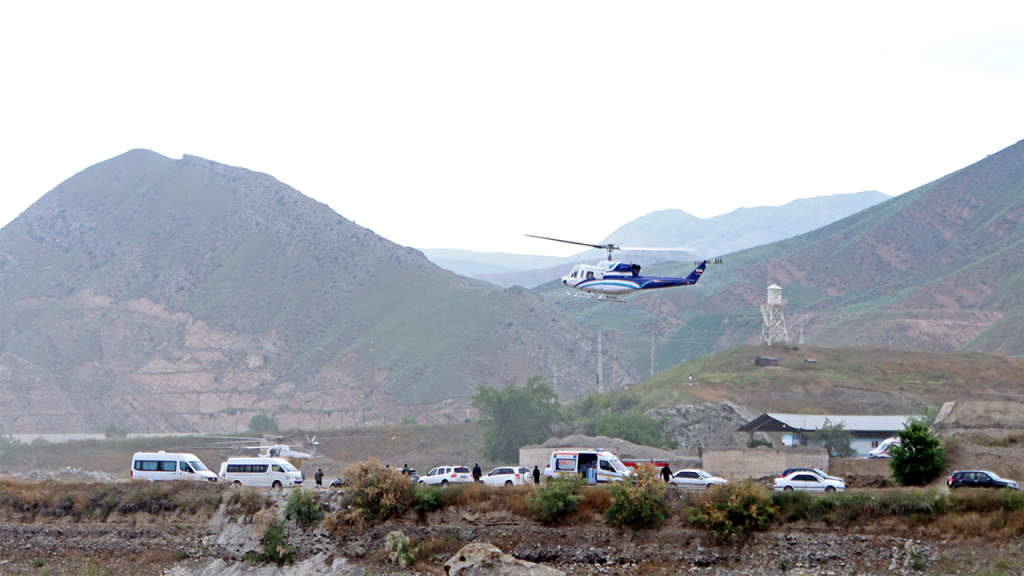A helicopter carrying Iran’s President Ebrahim Raisi, Foreign Minister Hossein Amir-Abdollahian, and other officials made a “hard landing” on Sunday, resulting in no sign of life being spotted at the crash site the following day. Rescuers have not yet reached the site, which was across a steep valley. The Iranian Red Crescent Society reported seeing the helicopter from a distance of roughly 1.25 miles as the officials had been missing for over 12 hours at that point. The crash occurred in Iran’s East Azerbaijan province, near Jolfa, close to the border with Azerbaijan, with conflicting reports on the exact location of the crash.
Authorities stated that the helicopter was forced to make a hard landing due to bad weather and fog, causing a delay in the arrival of rescue teams to the site. The incident involved the governor of the East Azerbaijan province, other officials, and bodyguards, adding to the urgency of the situation. The crash, described by some as an incident and by others as a hard landing, raised concerns about the safety of the officials on board. This incident occurred amidst rising tensions in the region, including an unprecedented drone-and-missile attack against Israel last month and ongoing protests against Iran’s government and its handling of various issues.
Rescue teams were deployed to the region, but poor weather conditions and visibility hampered their efforts to reach the crash site promptly. The lack of access to the site and conflicting reports added to the uncertainty surrounding the fate of the officials on board the helicopter. The incident has sparked concerns about the safety and security of high-ranking government officials in Iran, especially in light of recent geopolitical tensions in the region. The delay in locating the officials and conducting rescue operations highlighted the challenges posed by adverse weather conditions and remote locations in emergency situations.
The crash of the helicopter carrying Iran’s President and other officials has drawn attention to the risks faced by government officials during official travel, particularly in regions with challenging terrain and unpredictable weather conditions. The lack of communication from the crash site and conflicting reports have left many questions unanswered about the circumstances surrounding the incident and the fate of the passengers. As rescue efforts continue in difficult conditions, concerns about the safety and security protocols for official travel in Iran have been raised, particularly in light of recent geopolitical developments and regional tensions.
The uncertainty surrounding the crash of the helicopter carrying Iran’s President and other officials has underscored the challenges faced by emergency responders in reaching remote and inaccessible areas, particularly in adverse weather conditions. The incident has raised questions about the preparedness and response capabilities of authorities in handling emergencies involving high-ranking government officials. As rescue teams work to locate and assist those involved in the crash, attention has turned to the implications of the incident for Iran’s leadership and the stability of the region. The need for transparency, communication, and effective coordination in emergency situations has been highlighted by this tragic event.


